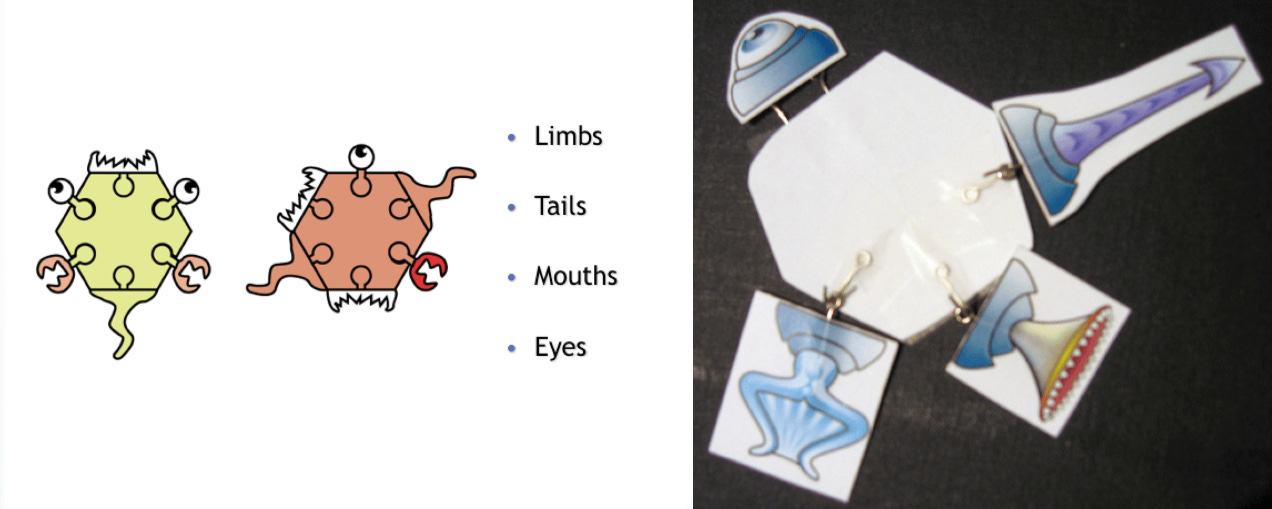Making a Videogame With Paper

Making a prototype is important, and paper prototyping is one of the cheapest and easiest ways to put something in front of players. It requires zero code and can be changed as you test (you can literally draw something if you forgot to add it). The goal with paper prototyping is to turn an idea into something people can actually interact with. Getting something on paper makes you think hard about the game itself.
- Yes, you'll have a menu system, but where is it going to go on the screen? The Top? The bottom? or does a player have to touch a button to show it?
- Yes, the player can walk on an overworld, but how will they do it? Is the movement grid based like classic Pokemon? Hex based like Civilization? Or do they walk on a map until they encounter enemies like in early final fantasy games?
- Yes, there will be an inventory, but will it be a list like lots of RPGs? Or space based like Leon's briefcase in Resident Evil 4?
These are the details you need to iron out in order to make your game. Simply drawing out examples will help you make these decisions, and will help you get it in front of another person where you can test it.
Paper prototypes are also very good at testing user interfaces. In 2009 I made an AR game for the iPhone/iPod Touch and used paper prototypes to design the interface. To simulate how players would play the game on their devices, my team created a paper prototype of the device itself which could hold various “screens” which were paper mock-ups of the different screens a player would interact with. When we playtested the prototype we would ask participants to perform various tasks like signing in and starting a game. Whenever a player touched a button on the screen, we would swap the screen in prototype with the screen they would see next. By making the prototype bigger than the final device we could also very clearly see what players touched during a playtest.
With enough creativity, you can make a paper prototype for any type of game. So, let’s go through a few examples using different genres.
Bejeweled Paper Prototype Example
Let’s pretend we were going to make a game like Bejeweled. You can imagine that a paper prototype of this could be several pieces of paper with jewels drawn on them that players could then touch and move. The designer would act as the game’s system, removing any three items the player matched and then filling the empty spaces with new jewels. You could also prototype a version of Bejeweled using a chessboard and different types of coins or other tokens. In both versions the core of the game stays intact and you get to try out the mechanics with someone else in a short amount of time, and without any art assets or code.
Turn-Based Game Paper Prototype Example
Turn based games like Final Fantasy and Pokémon can also be prototyped with paper. This kind of system would require things like dice to determine the probabilities of some attacks, and pen and paper to keep track of important values like hit points and mana (if your game has those). For RPGs I recommend using various types of dice to simulate different probabilities. Something like Chessex’s Pound-o-dice will keep you swimming in dice for years. First Person Shooter Game Paper Prototype Example
Even first person shooters can be prototyped with pen and paper, though you do have to be a bit creative about it. For a first person shooter, the excellent book on game design The Art of Game Design: A Book of Lenses suggests using a 5 second timer, like a metronome, and a game board (a chessboard for example). The player and the enemies would then be represented by tokens on the game board as would walls and power-ups. People playing your game would be allowed to move one space every time the timer ticked and could shoot anything within sight (anything in a straight line from the player). Sure, it wouldn’t feel exactly like a FPS running on your computer, but you could still get a good feeling for the mechanics you’re implementing.
For more examples of converting videogame mechanics into paper prototypes I would recommend checking out boardgames versions of popular games like the X-COM board game, the Bloodborne Card Game, or the DOOM board game.
Another example from Stone Librande’s 2009 GDC talk; paper prototypes used to design part of the game Spore.
Paper prototypes are quick, cheap, and flexible prototypes that help you get an idea in front of a user and helps you test things like UI and gameplay. Some games transfer to this format better than others. Twitch games, for example, don’t quite translate onto paper, but it can be done if you get creative. Keep in mind that a fully realized version of your game isn’t what you’re going for here.
If you’ve finished making a paper prototype and want something a little more detailed, or if paper prototyping won’t work for your particular needs, stay tuned for our blogs on these other methods.
- Wireframe Prototype: Lower tech and easy to share.
- Greybox Prototype: Playable game with limited assets.
Consider becoming a patron for exclusive content and perks.
Or sign up for our substack

